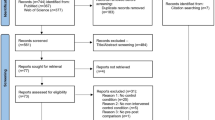
Overview
- Introduces the theory that the magnitude associated with stretching intensity is a mechanotransduction response, concerned with the relationship of the cells and tissues to their environment, translating any physical input or mechanical perturbation into a biochemical signal
- Takes a unique approach -- attempts to quantify the magnitude of stretching intensity by referring to the inflammatory response, down to a cellular level
- investigates the importance of stretching intensity to aid the recovery of athletes from training, competition, and injury, as well as the rehabilitation of individuals suffering from various musculoskeletal disorders
Access this book
Tax calculation will be finalised at checkout
Other ways to access
About this book
Similar content being viewed by others

Keywords
Table of contents (9 chapters)
-
Front Matter
-
Back Matter
Authors and Affiliations
About the author
Nikos C. Apostolopoulos PhD, a recovery and regeneration specialist, is the founder of microstretching® and stretch therapy®. He received his PhD and MPhil from Wolverhampton University (UK) and his BPHE (sports medicine) from the University of Toronto (CAN). Nikos has worked and continues to work and consult with professional, elite, and amateur athletes, and with numerous sports organisations (NHL, NBA, NFL, EPL, MLS, NCAA, ERL). Presently, he is affiliated with the Faculty of Kinesiology and Physical Education, University of Toronto (CAN), is an editor for numerous international sports journals, and is a member of IASP and ISEI.
Bibliographic Information
Book Title: Stretch Intensity and the Inflammatory Response: A Paradigm Shift
Authors: Nikos C. Apostolopoulos
DOI: https://doi.org/10.1007/978-3-319-96800-1
Publisher: Springer Cham
eBook Packages: Biomedical and Life Sciences, Biomedical and Life Sciences (R0)
Copyright Information: Springer Nature Switzerland AG 2018
Hardcover ISBN: 978-3-319-96799-8Published: 10 January 2019
eBook ISBN: 978-3-319-96800-1Published: 27 December 2018
Edition Number: 1
Number of Pages: XVIII, 231
Number of Illustrations: 9 b/w illustrations, 83 illustrations in colour
Topics: Cell Physiology, Cytokines and Growth Factors, Animal Biochemistry, Sports Medicine



